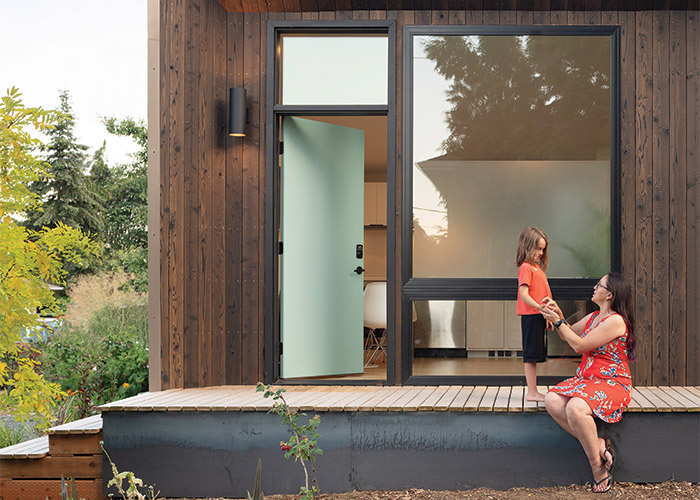ADU 101
ADU 101
Why an ADU
What’s an Accessory Dwelling Unit (ADU) and why would I build one?
Accessory Dwelling Units (ADUs), also called granny flats, backyard cottages, in-law units, or converted garages, can meet the needs of Humboldt County residents while helping create new housing for our community. ADUs provide homeowners with flexibility as their family grows and lives change. From space for your loved ones to supporting the community and building your retirement through renting, your ADU will grow with you.
Types of ADUs
Detached
New or converted freestanding structure, such as a backyard cottage.
Attached
New or converted sharing at least one wall with the primary house.
Remodel / Expansion
New or converted space with sq footage added to the primary house.
Interior Conversion
Converted existing space (e.g. an attic or basement).
Garage Apartment
Converted former garage space.
Above / Below Garage
New or converted above or below garage space.
Interior Conversion
Converted existing space (e.g. an attic or basement).
The Benefits of Building an ADU
-
Family
ADUs can meet the needs of a variety of family situations. Whether it is used as a close but separate home for parents, grandparents, a family member with disabilities, or grown children temporarily returning home, ADUs are a great way to stay together yet also maintain separate lives and privacy.
-
Financial Security
ADUs can generate a steady source of income. Renting your unit can help pay your mortgage, build your retirement, save for a rainy day in case of unexpected life events, or just reduce your cost of living. Not only will you receive rental income in the short term, but your sale price and property value can also increase too.
-
Flexibility
ADUs can provide you with flexibility as your life changes. Whether it is used as a close but separate home for family members, an extra living space, for extra income, a way to downsize while remaining in your community, or all the above, an ADU will grow with you and your family, and provide more freedom as you age.
-
Community Benefits
ADUs can help address housing challenges in Humboldt County by adding homes that typically rent for less, which helps provide workforce housing and ensures a more diverse community.

What can I build in Humboldt County
ADUs fall into two major categories, detached and attached, and the rules are as follows
Detached ADUs
- Up to 1,200 square feet if it fits on your property without a Special Permit
- Up 16 feet tall (or 25 feet tall on larger residentially zoned lots)
- At least 4-foot side and rear yard setbacks (if converted from a freestanding structure, like a garage or pool house, the 4-foot setbacks do not apply)
Attached ADUs
- Up to 1,200 square feet if building the ADU at the same time as the main dwelling unit
- Up to 50% of the size of your existing primary house (if your home is 2,000 square feet, you can build a 1,000 foot attached ADU)
- Even if your house is huge, your attached ADU cannot be larger than 1,200 square feet without a Special Permit
- Can be new or converted as long at it shares one wall with the primary house
JADUs (interior conversion)
- Located within existing walls of the primary home or attached garage
- Up to 500 square feet
- Owner must occupy the primary home
- Must include a separate exterior entrance and efficiency kitchen (sink, cooking appliance, counter surface, and storage)
- May share a bathroom with primary residence
For more information, view the Humboldt County Standards and Permit Process Graphic.
What about JADUs?
You may have also heard of a Junior ADU (JADU), which are up to 500 square feet of interior converted space within a single-family home. Some JADUs have their own bathroom, while others share one with the main house. Construction costs for JADUs are typically much lower. However, the owner must live in the primary home.
Invest in the future of your community
Building an ADU not only benefits the homeowner, but also supports the community. ADUs often provide homes for the local workforce and families who serve essential roles in the county. Increasingly, these community groups are finding it difficult to find suitable and affordable housing. With the lack of available affordable housing, building and renting an ADU is a community service.

